Abstract
Quantitative methods were developed for the study of the early stages in the interaction of Bdellovibrio bacteriovorus and host bacteria. Attachment measurements were based on the differential filtration of host and parasite. Invasion was measured by estimation of radioactively labeled Bdellovibrio cells remaining attached to the host cells after mechanical agitation. The kinetics of attachment and the final number of Bdellovibrio cells attached were dependent on the multiplicity of the parasite, the composition and pH of the medium, and the incubation temperature. Inhibitors of Bdellovibrio motility, including chelating agents, NaN3, and low pH, all inhibited attachment, as did anaerobiosis. Ultraviolet-killed host cells retained their competence for attachment of Bdellovibrio cells, whereas heat-killed cells lost it. Invasion was selectively inhibited by inhibitors of protein synthesis, such as streptomycin, puromycin, and chloramphenicol. These antibiotics had no effect on attachment.
Full text
PDF

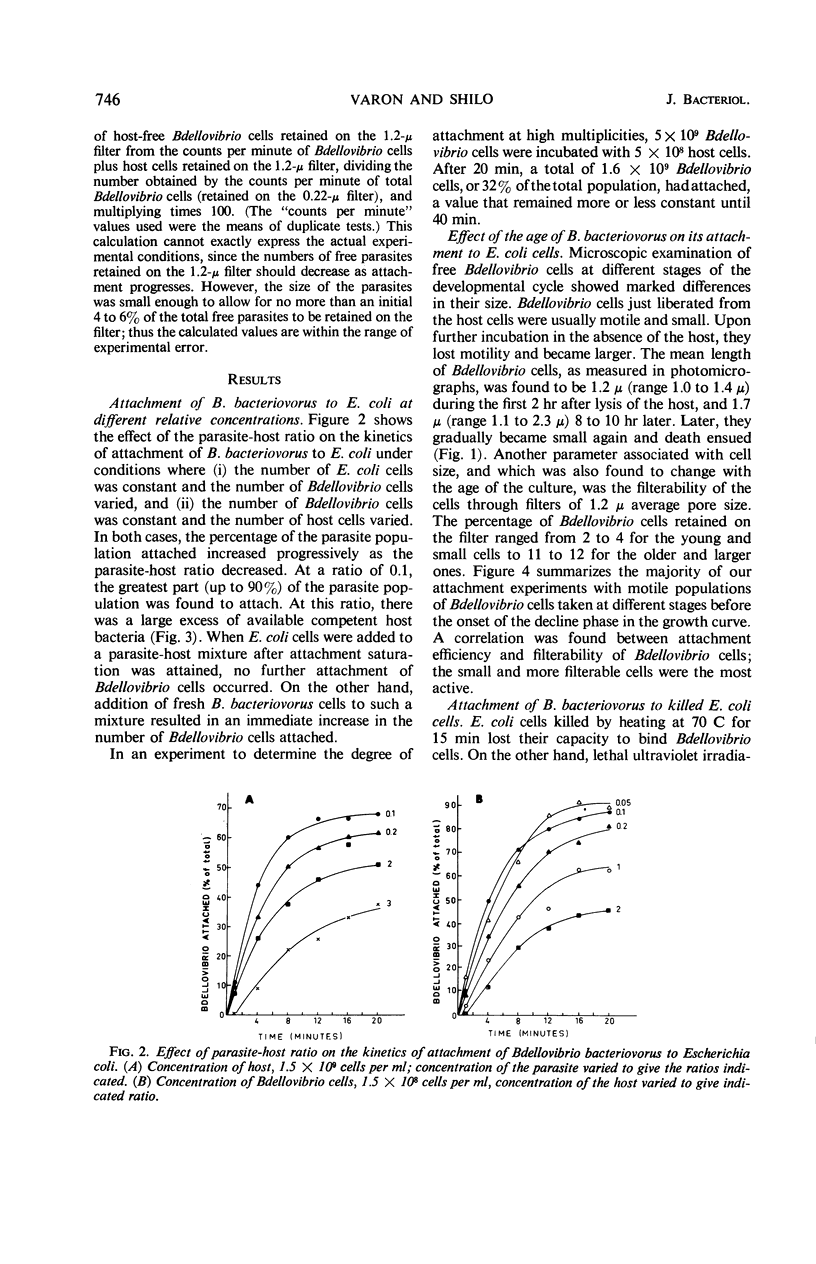
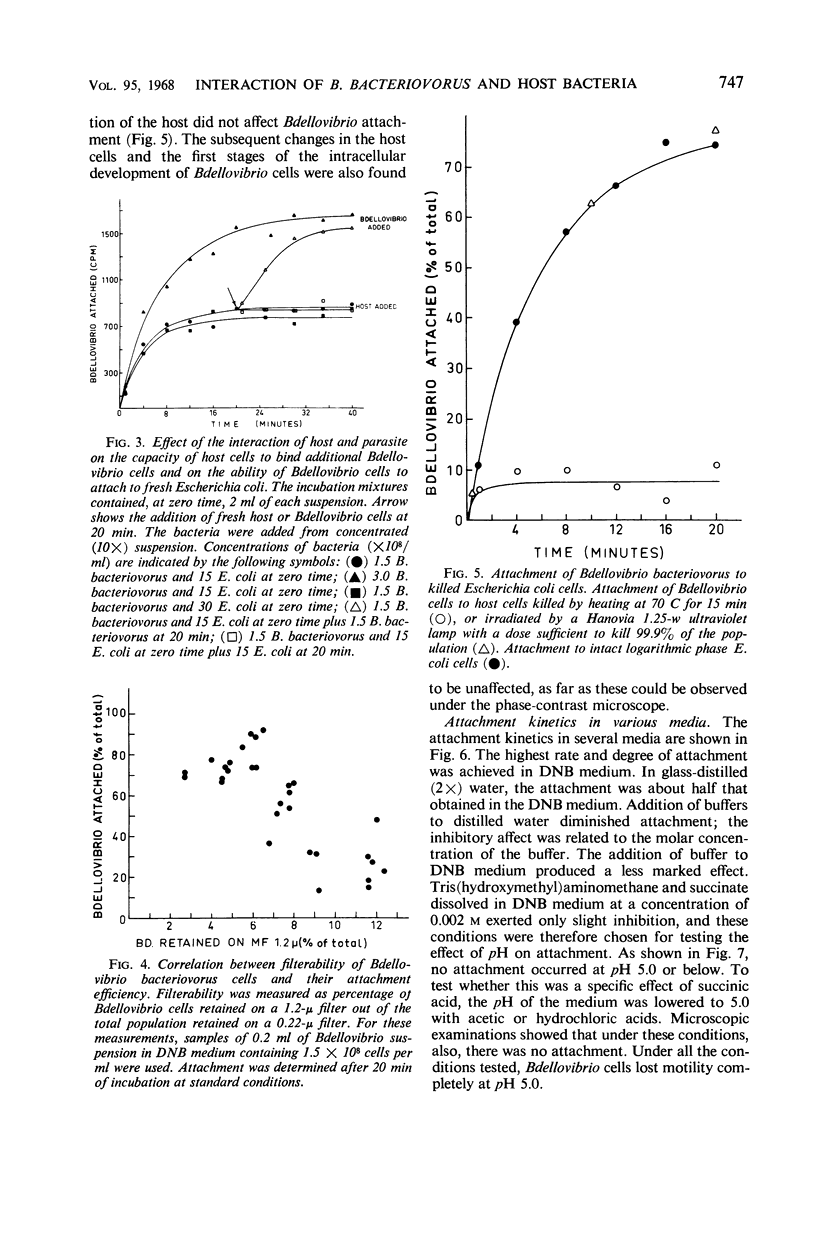
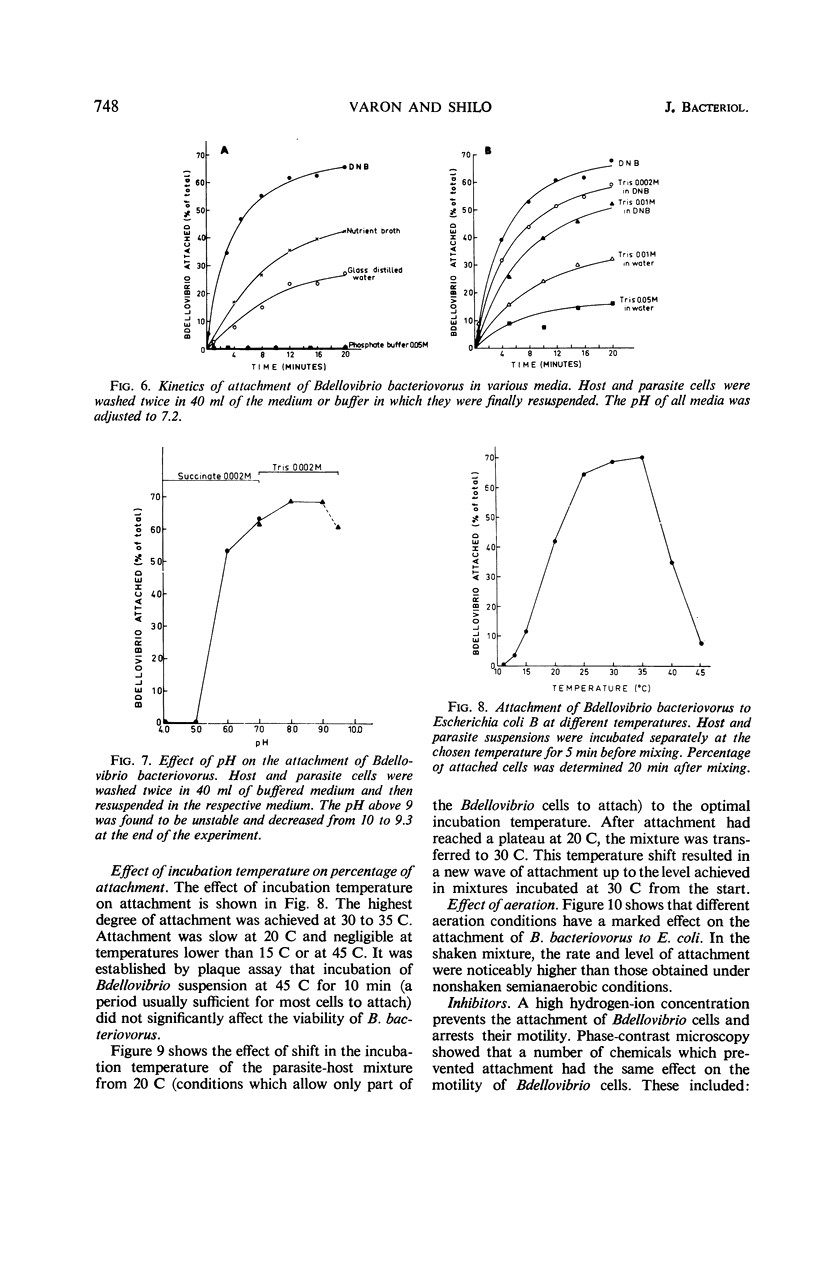

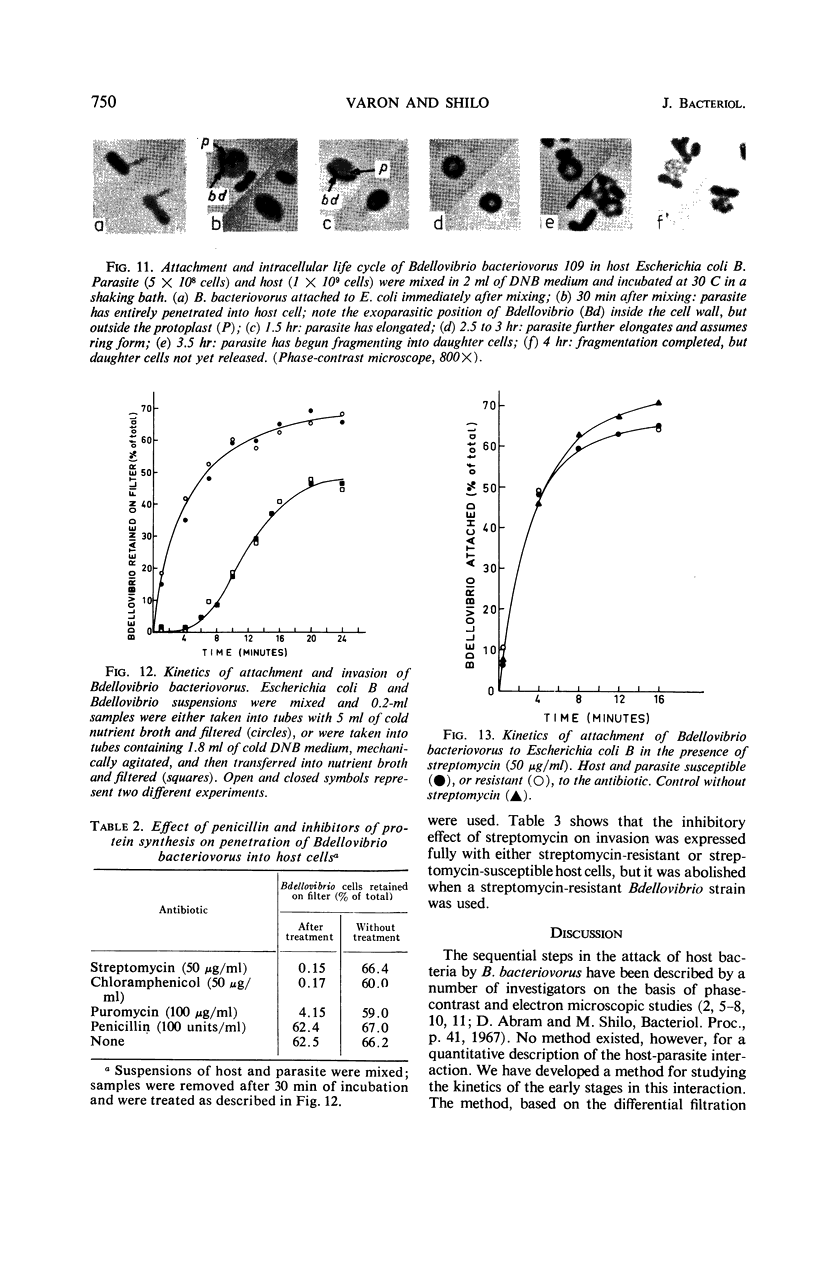
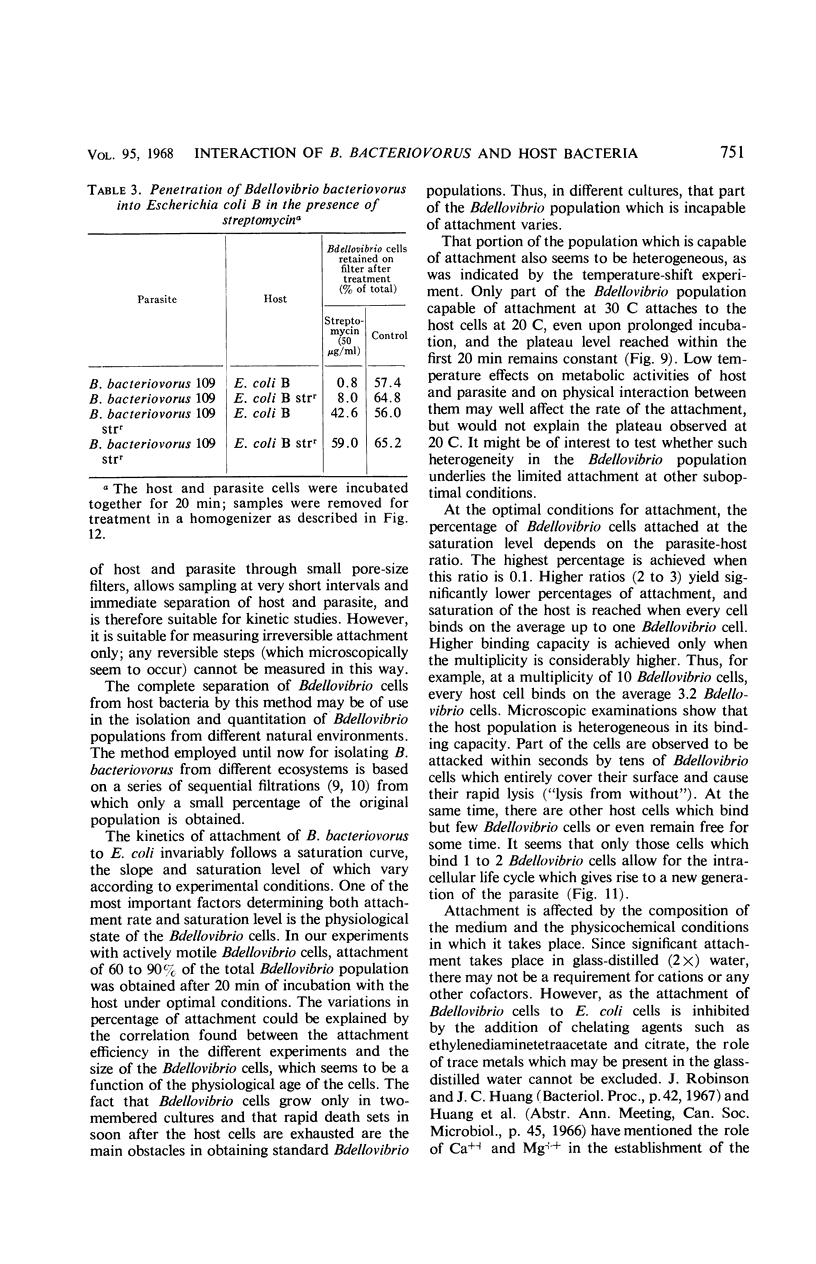
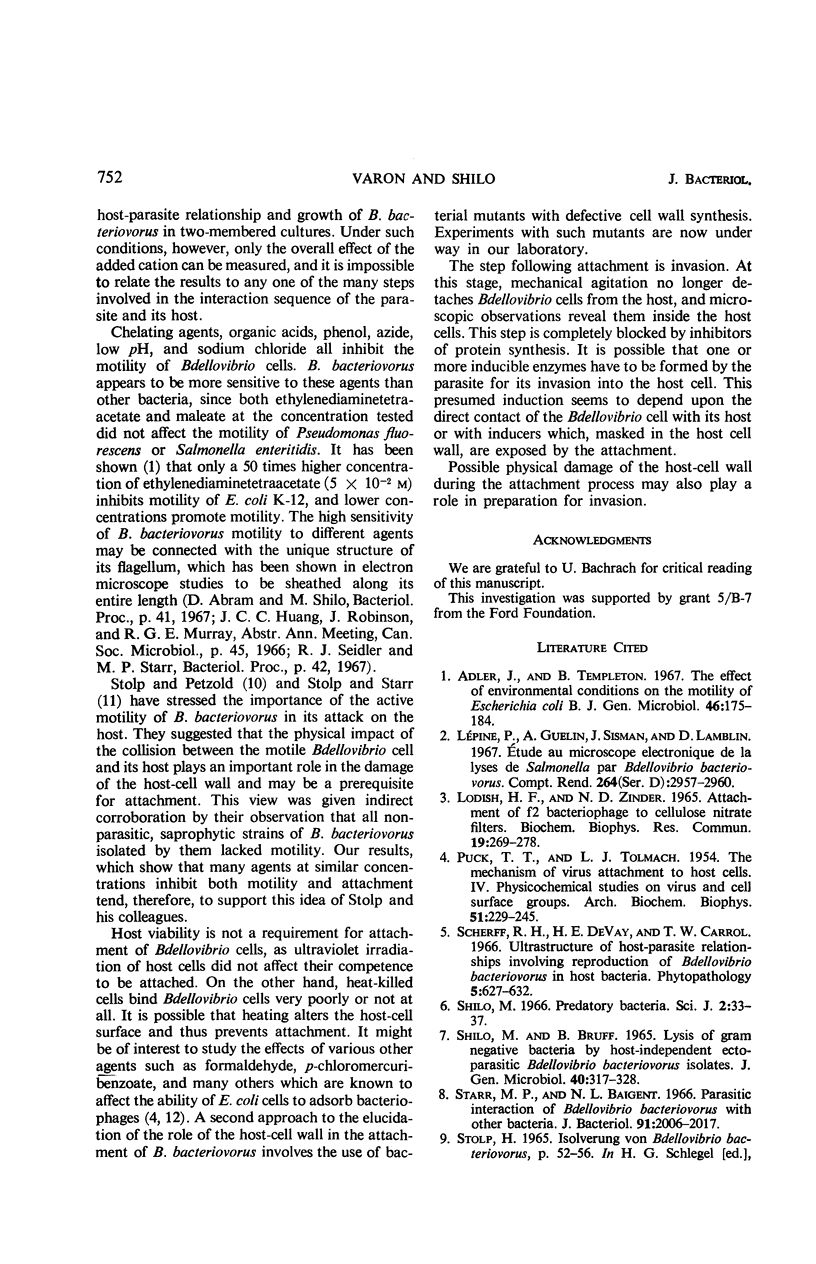
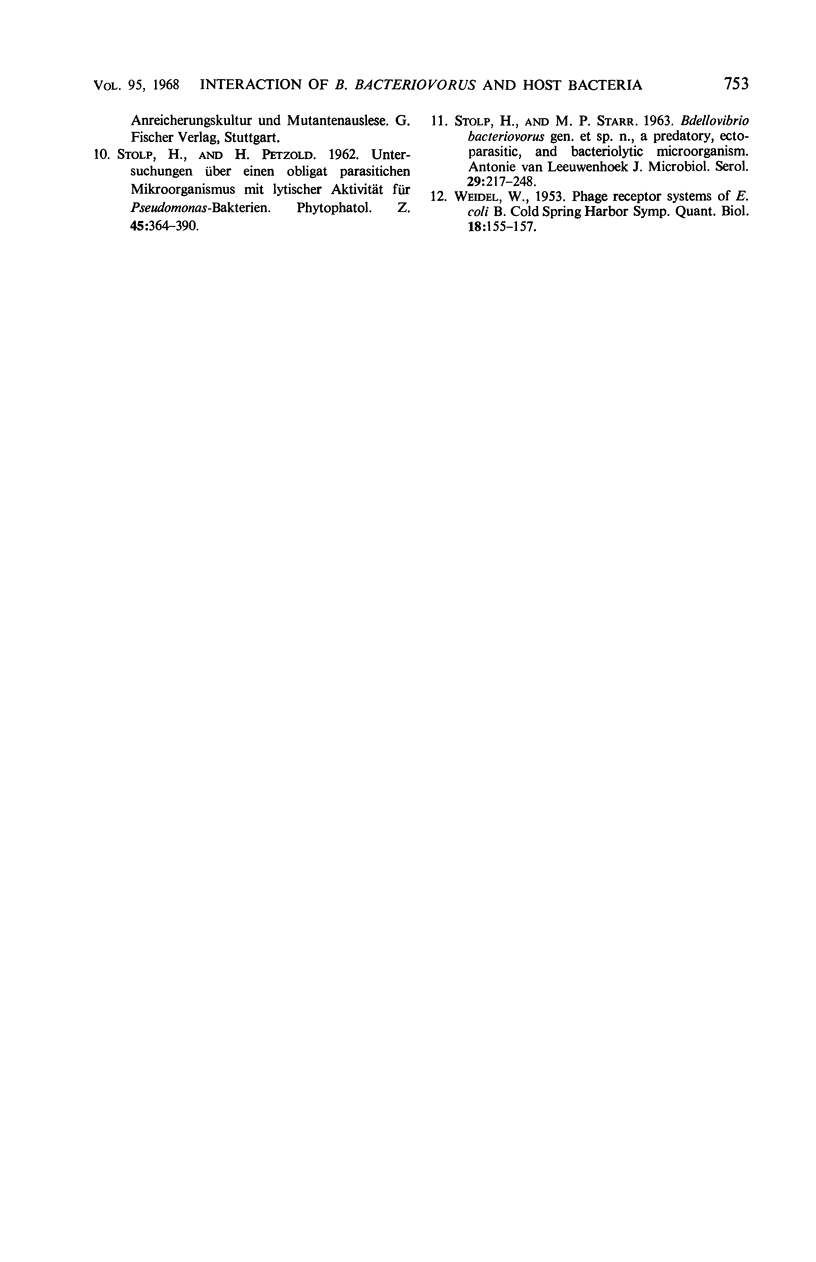
Images in this article
Selected References
These references are in PubMed. This may not be the complete list of references from this article.
- Adler J., Templeton B. The effect of environmental conditions on the motility of Escherichia coli. J Gen Microbiol. 1967 Feb;46(2):175–184. doi: 10.1099/00221287-46-2-175. [DOI] [PubMed] [Google Scholar]
- LODISH H. F., ZINDER N. D. ATTACHMENT OF F2 BACTERIOPHAGE TO CELLULOSE NITRATE FILTERS. Biochem Biophys Res Commun. 1965 Apr 23;19:269–278. doi: 10.1016/0006-291x(65)90453-5. [DOI] [PubMed] [Google Scholar]
- Lépine P., Guélin A., Sisman J., Lamblin D. Etude au microscope électronique de la lyse de Salmonella par Bdellovibrio bacteriovorus. C R Acad Sci Hebd Seances Acad Sci D. 1967 Jun 19;264(25):2957–2960. [PubMed] [Google Scholar]
- PUCK T. T., TOLMACH L. J. The mechanism of virus attachment to host cells. IV. Physicochemical studies on virus and cell surface groups. Arch Biochem Biophys. 1954 Jul;51(1):229–245. doi: 10.1016/0003-9861(54)90470-1. [DOI] [PubMed] [Google Scholar]
- STOLP H., STARR M. P. BDELLOVIBRIO BACTERIOVORUS GEN. ET SP. N., A PREDATORY, ECTOPARASITIC, AND BACTERIOLYTIC MICROORGANISM. Antonie Van Leeuwenhoek. 1963;29:217–248. doi: 10.1007/BF02046064. [DOI] [PubMed] [Google Scholar]
- Shilo M., Bruff B. Lysis of Gram-negative bacteria by host-independent ectoparasitic Bdellovibrio bacteriovorus isolates. J Gen Microbiol. 1965 Sep;40(3):317–328. doi: 10.1099/00221287-40-3-317. [DOI] [PubMed] [Google Scholar]
- Starr M. P., Baigent N. L. Parasitic interaction of Bdellovibrio bacteriovorus with other bacteria. J Bacteriol. 1966 May;91(5):2006–2017. doi: 10.1128/jb.91.5.2006-2017.1966. [DOI] [PMC free article] [PubMed] [Google Scholar]
- WEIDEL W. Phage receptor systems of E. coli B. Cold Spring Harb Symp Quant Biol. 1953;18:155–157. doi: 10.1101/sqb.1953.018.01.025. [DOI] [PubMed] [Google Scholar]



